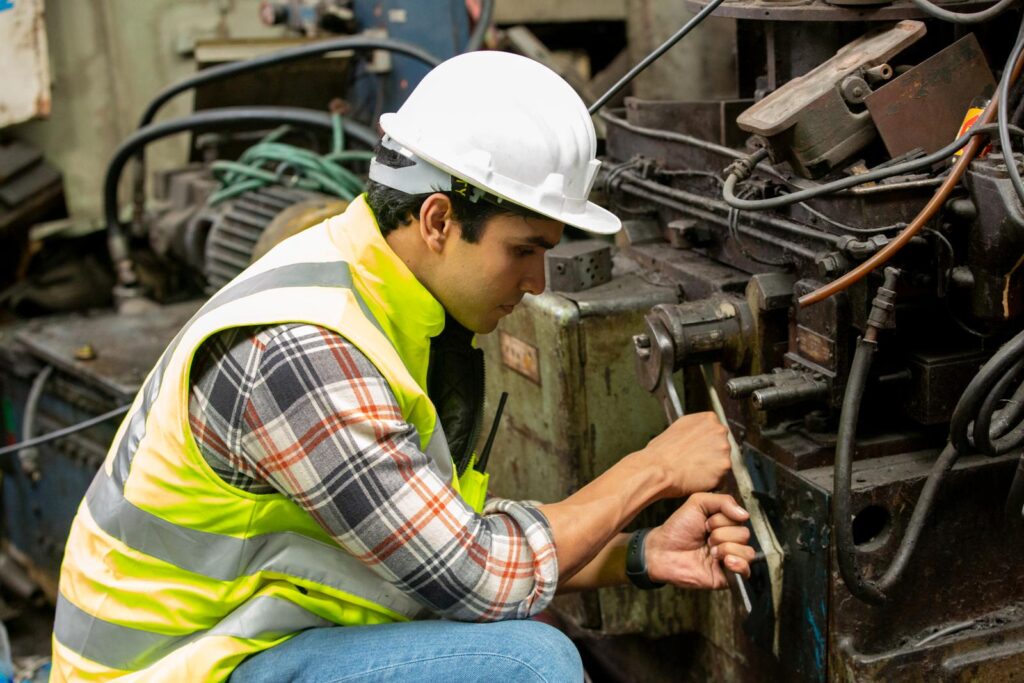Let’s talk about your dream project.
Schedule a free consultation now
What are Bag Filters? A bag filter is a form of air filtration media used within manufacturing units. The purpose of bag filters, as with any filter, is to remove impurities from the overall solution; in this instance, ensuring the air is purified from oils, dust, and dirt contamination. Think of a filter bag as a ‘sieve’ that lets air pass through and stops any other particles from transferring through the conveyor system.
To ensure that your bag house dust collection units run at maximum efficiency, pleated bag filters are used due to their long lifespan and high filtration surface area.
The Difference Between Pleated Bag Filters and Standard Bag Filters
There are differences in usage, material, and performance between pleated and standard bag filters.
Pleated bag filters are up to three times larger in the cloth area, which allows the bag house to collect more contaminants but also negates the need to invest in a larger bag house for the filter bag. Due to their one-piece design, pleated bag filters do not use a filter cage. Compared to standard filter bags, pleated filters also use caps at the bottom to prevent leakage. Furthermore, pleated bag filters are used at the ‘surface’ level, whereas standard bag filters are used as a depth filter solution.
The difference here is that depth filters capture any contaminant throughout the whole medium of the filter media and are made using different materials to a bag filter (surface filter).
Understanding Air Filtration in manufacturing units: In dust collection systems within industries such as; cement, limestone, etc., all manufacturing units have dust collection/extraction systems where pleated or standard bag filters are installed. All the dust (smaller particles of cement, dust, and limestone) generated throughout the manufacturing process is sucked into the bag house, and the filters arrest those particles so they are not thrown into the atmosphere.
This process serves two purposes:
How Bag Filters are Made: The manufacturing of bag filters is a process in which the required media membrane for the air filtration system is identified and put through conditioning to ensure that it is proficient in air filtration.
Choosing the Media: First, the media is produced by determining the material used in the air filter. Over 20 different media types can be used, and these materials will vary depending on the industry and substance being filtered.
This process is fully automated, where the fibre is carefully selected. During the manufacturing of the media, various checkpoints are in place for quality assurance procedures – this is to ensure the membrane isn’t damaged or broken during production and maintains a robust and agile filter bag.
A good filter media will repel water and have a low coefficient of friction, which means that the filter bag media is easy-to-clean, with substances not being able to stick to it. Once the media has been created, it moves onto the treatment process, whereby the filter bag media may be calendared, stocked, and in roll form.
Pleating the Bag Media: Once the roll is created, it is then Fed into a Pleating Machine. This machine pleats the Media and provides the optimum surface area for filtering. The pleating process is used as pleated filter bags are shorter than standard filter bags, so the drop-out area is larger, and there is a lesser chance of abrasion.
Producing the Filter Core: As the filter core is produced, the inner and outer metal core of the filter is manufactured using a CNC machine for precision control. A CNC machine uses Computer-Aided Design (CAD) for exact precision and safety for workers when producing the filter case. The filter bag core is made of SS or Exp GI, and the inner core is added for cases requiring extra strength. During this part of the process, the top cap is produced, and the lower Base is for support of the filter bag. Finally, perforations of the casing are also given for filtering.
Bonding the Filter Media to the Casing: During the final stage of filter bag media production, the pleated media is bonded together with the casing. A ‘snap ring’ is installed below the cap to ensure that the filter retains its shape, stays intact, and contributes to its longer lifespan and robustness.
Quality Assurance: A final quality assurance check occurs once the filter bag is produced. Here, an officer should inspect the filter quality, along with the matching of the customer’s requirements for the filter bag. Once satisfied, loads the filter bag onto the finished goods zone, ready for distribution.
The Advantages of Using Pleated Filter Bags Over Standard Filter Bags

Air slides are an ingenious technology that is crucial in many industries. They are used to convey bulk materials, such as powders and granular substances, in a
Learn more
In every industry, maintaining operational efficiency and extending the life span of equipment are critical considerations. With its complex machinery and demanding
Learn more
Filter bags play a crucial role in various industries by ensuring efficient air filtration and dust collection. However, when faced with extreme dust challenges,
Learn more